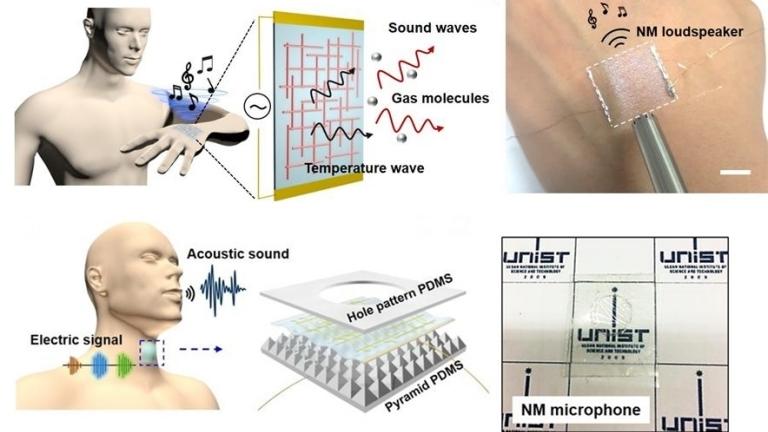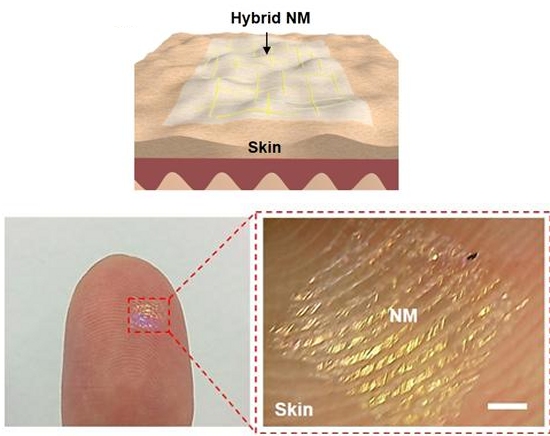TECH

Transparent speaker makes your skin play music
Transpire music
Some less restrained adepts of automotive sound are likely to vibrate with this news: How about turning your own skin into a speaker?Of course the technology was not designed for this.Saewon Kang and colleagues at the National Institute of Science and Technology (UNIST) in South Korea are working to help the hearing and speech impaired.But the new technology can be exploited for a number of potential applications, such as the Internet sensors of things, electronic clothing and health care appliances.The team demonstrated the functionality of the technique by manufacturing a speaker that can be connected to almost anything to produce sounds. By making the device work upside down, it acts as a microphone, which can be connected to cell phones and computers to control security systems or any voice-activated equipment.Everything is based on ultrafine, transparent and electrically conductive hybrid nanomembranes. With nanoscale thickness, the membranes can be glued wherever desired."Our ultrafine, transparent and conductive hybrid nanomembranes facilitate conformational contact with curvilinear and dynamic surfaces without any cracking or rupture," said Saewon Kang.

Nanomembranes
Nanomembranes are ultra-thin separation layers with nanoscale thickness - imagine them as extremely fine filters. Polymer nanomembranes have attracted considerable attention from researchers thanks to properties such as extreme flexibility, ultra-light weight and excellent adhesiveness, and can be fixed directly on virtually any surface.However, as they are very thin, they tear easily, as well as have no electrical conductivity.Kang solved these two shortcomings by incorporating a network of silver nanowires into the polymer nanomembrane. These nanowires function as transparent electrodes, which have been used in several demonstrations of flexible electronics, including flexible and stretchable screens.A mesh of nanowires allowed to create a speaker and a microphone and the whole associated circuit. The components can be fixed on the skin discreetly and are virtually imperceptible. In the demonstrations, they were glued to the neck, to feel directly the vibrations of the vocal cords."These layers are capable of detecting vocal sounds and vibrations produced by triboelectric voltage signals [triboelectricity is the generation of electric charges by friction between materials] corresponding to sounds, which can be further exploited for several potential applications, such as input and output devices. sound output, "said Kang.
"For commercial applications, the mechanical durability of nanomembranes and speaker and microphone performance should be further improved," notes Professor Hyunhyub Ko, the team's coordinator.
Bibliography:
Transparent and conductive nanomembranes with orthogonal silver nanowire arrays for skin-attachable loudspeakers and microphones
Saewon Kang, Seungse Cho, Ravi Shanker, Hochan Lee, Jonghwa Park, Doo-Seung Um, Youngoh Lee, Hyunhyub Ko

No comments:
Post a Comment